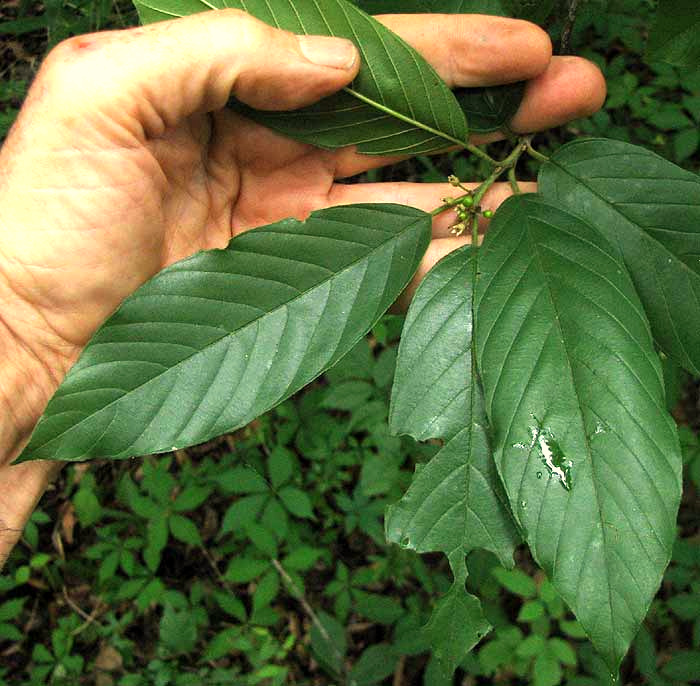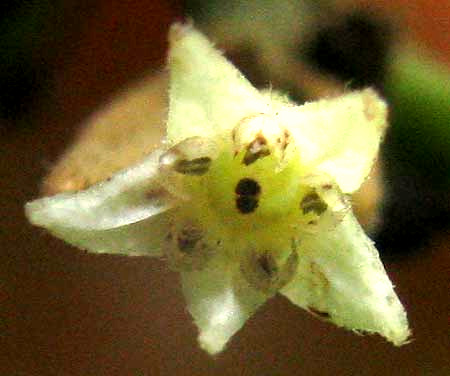Excerpts from Jim Conrad's
Naturalist Newsletter

from the May 20, 2012 Newsletter issued from the woods of the Loess Hill Region a few miles east of Natchez, Mississippi, USA
CAROLINA BUCKTHORN FLOWERING
Above you see the leaves and flowers of a small tree that most people don't notice until its red, crabapple-like fruits appear later in the season. It's the Carolina Buckthorn, FRANGULA CAROLINIANA. To be so common and widespread in the US Southeast, it's surprisingly little known. The elliptical, alternate leaves (one leaf per stem node) with conspicuous, parallel secondary veins that arch at their tips, then briefly follow the leaf margin's edge, are good field marks for its identification.
One reason buckthorns are often overlooked is that their flowers, though structurally interesting, are small. A close-up shows a blossom's peculiarities below:

The five, petal-like appendages forming a star are hairy sepals, not petals. Sepals are calyx lobes, the calyx usually being an inconspicuous, green, cuplike affair below the flashier corolla and sexual parts. Carolina Buckthorn's blossoms do also bear petals, however. They're the white, hoodlike items held erect and practically enclosing the five dark-anthered stamens arising between the sepals. The stamens and their shelters look like five Virgin Marys in their stand-alone niches, all facing the ovary in the flower's center. This is a remarkable configuration for a flower and probably it makes sense if you understand its pollination strategy, which I don't.
Carolina Buckthorns belong to the Buckthorn Family, the Rhamnaceae, a family producing many erect or climbing, woody, and often spiny species, and a few herbs. I find them more in arid zones. Despite the name, Carolina Buckthorns bear no thorns.